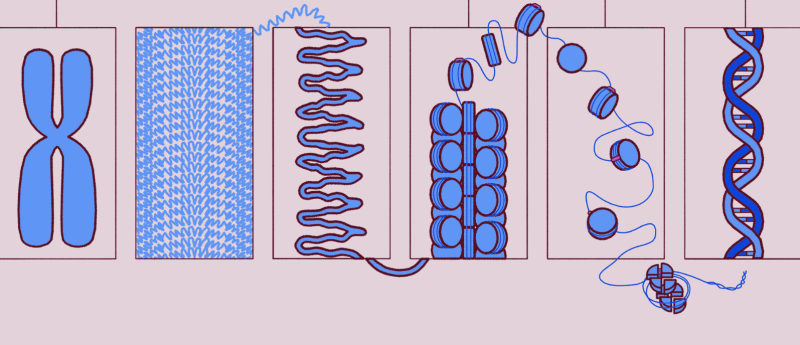Key cellular complex plays unexpected role in gene expression

Research has uncovered a previously unknown, widespread role of ORC in regulating human cell gene expression.
New work has revealed a much wider role for origin-recognition complex (ORC) in regulating human cell gene expression than previously thought. While scientists have long understood ORC’s primary role in initiating DNA replication, this research demonstrates its broad influence on epigenetics and the higher-order structure of chromatin, the tightly packed DNA–protein material that contains all of a cell’s genes.
The study, led by Anindya Dutta and his team at the University of Alabama at Birmingham (UAB) Department of Genetics (AL, USA), represents the first detailed look at how ORC subunits operate in human cells. “The unanticipated scale and breadth of the regulation opens new chapters in ORC biology,” Dutta commented.
The ORC is a six-subunit complex. A central and surprising finding of the study was that individual subunits, rather than the entire complex, can bind to thousands of unique DNA sites. This challenges conventional understanding of how the complex functions. Dutta noted, “Although the ORC subunits should bind DNA as part of a common six-subunit ORC, there are thousands of sites in the genome where one subunit binds but not another.”
Unraveling the genome
To uncover these intricate molecular mechanisms, the UAB team and their collaborators at the University of Virginia School of Medicine (VA, USA) started with human cancer cell lines with specific knockdown mutations of the ORC1, ORC2 or ORC5 subunits. They performed assay for transposase–accessible chromatin with sequencing (ATAC-seq) to identify regions of the genome that are ‘open’ or accessible, providing an insight into how the absence of ORC subunits affected chromatin structure.
To study protein–DNA binding directly, they applied a chromatin endogenous cleavage (ChEC) assay, which is based on a codon-optimized deltaSP–nuclease fused to an ORC subunit. When the enzyme is activated, it cleaves DNA at the exact location where the ORC subunit is bound, allowing for high-resolution mapping of ORC binding sites across the genome. For a comprehensive view of gene activity, RNA-seq was utilized to measure the levels of gene expression in the mutant cell lines.
 Harnessing mass spectrometry imaging to generate lipid maps
Harnessing mass spectrometry imaging to generate lipid maps
A new microfluidic method preserves worm anatomy to link lipid signals with body structure using mass spectrometry imaging.
Putting binding sites back on – or off – the menu
The research revealed that ORC’s unique binding sites have a profound and independent effect on gene expression. For example, the ORC2 subunit, depending on where it binds, can either compact chromatin and attract repressive histone marks – making genes less accessible – or it can activate chromatin for gene expression. This dual functionality highlights the complex and nuanced role of ORC in the cell.
The team also reported that ORC2 binding prevents the acquisition of CTCF at specific genomic locations. CTCF is a critical protein known as a ‘master weaver’ for its role in controlling DNA loops and folding, which in turn significantly influences gene expression. The study suggests that ORC2’s binding can locally repress chromatin, which keeps CTCF away from certain sites.
When ORC2 is absent, CTCF is free to bind to these sites, creating new anchor points for loop formation. At the two gene loci studied, this increased looping separated a gene enhancer from its promoter, effectively depressing the expression of that gene and allowing repressive epigenetic marks to spread.
The study provides a wealth of information about how ORC subunits carefully regulate gene expression in human cells. “We’re trying to understand how the incredible length of DNA is compacted and then unfolded at the right time in the right place to produce the right genes,” concluded Dutta. “The ORC appears to be one of the critical players in this process.”